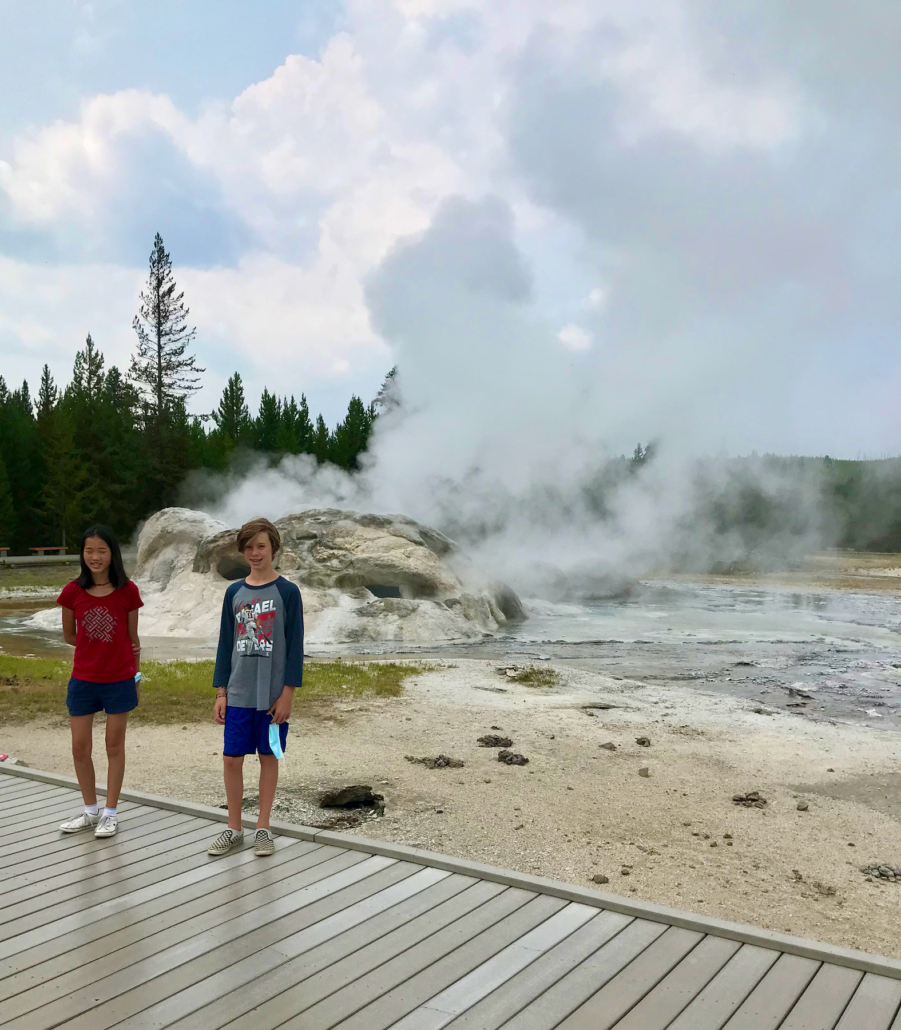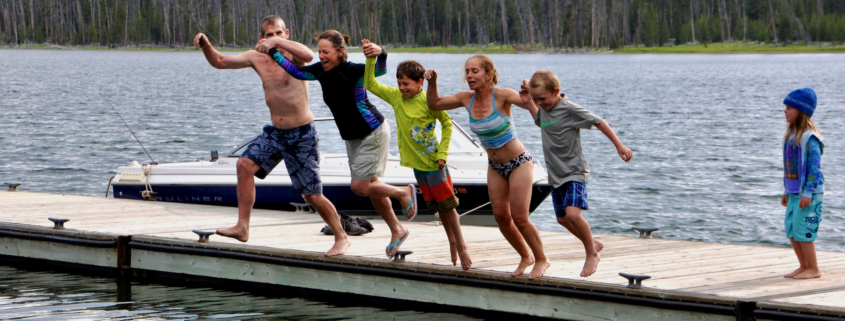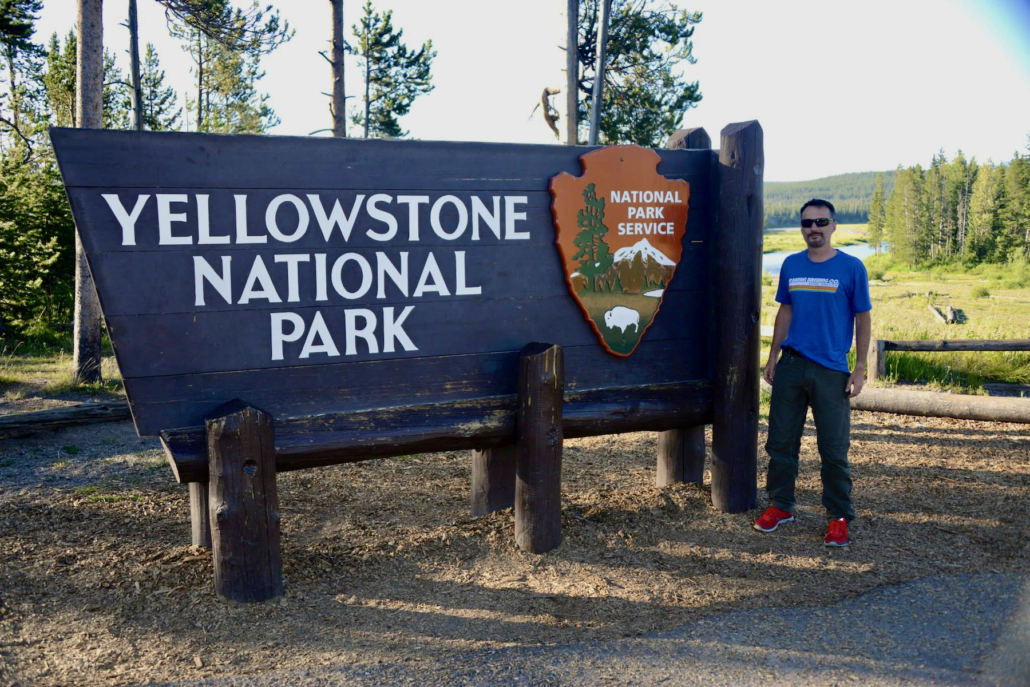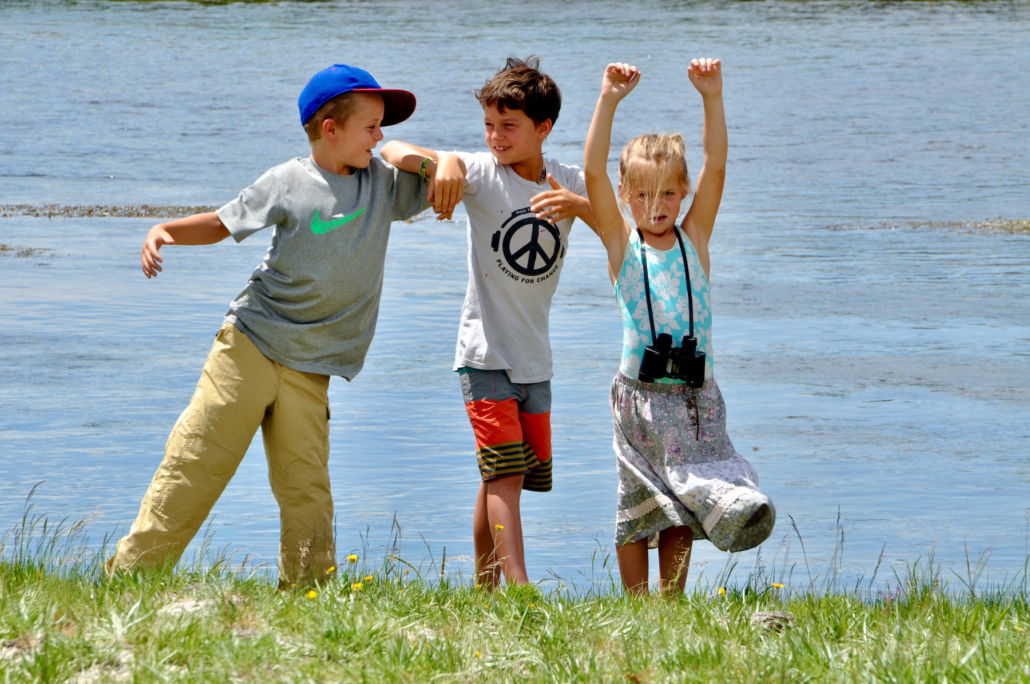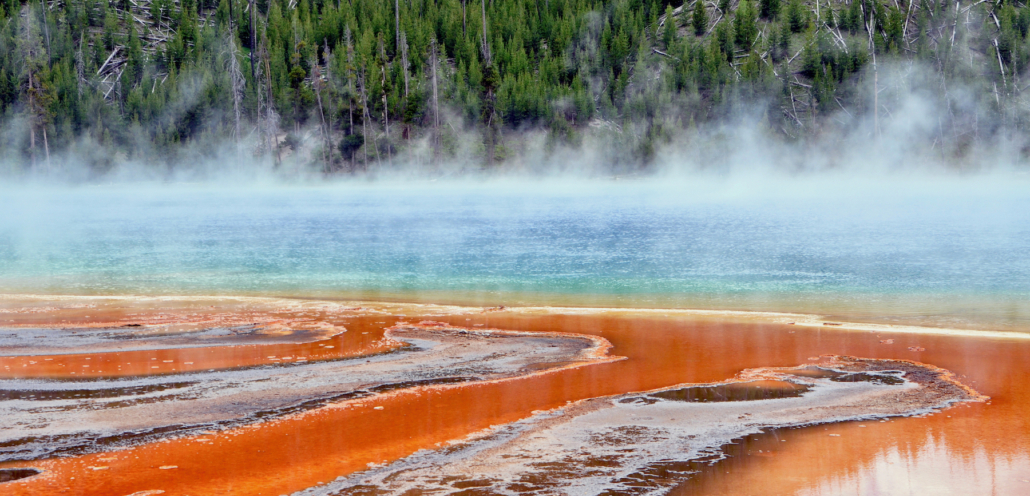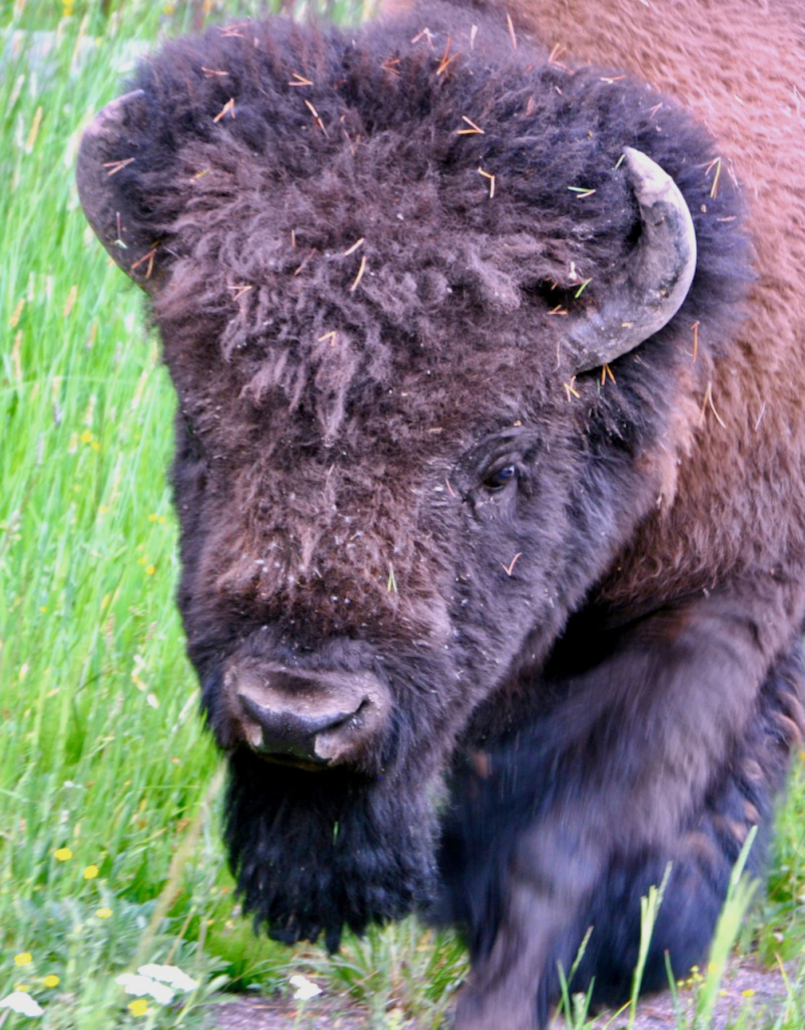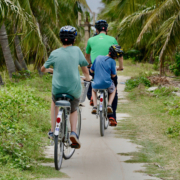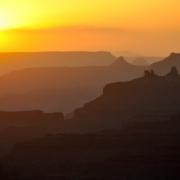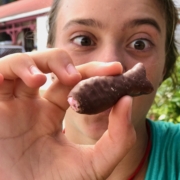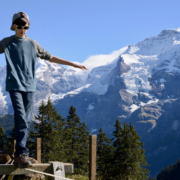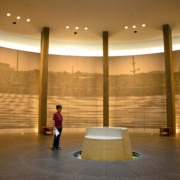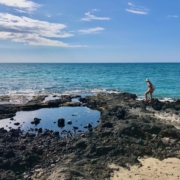Worldschooling in Yellowstone
Yellowstone is recognized as America’s First National Park, and it is the second largest in the Lower 48. It is a treasure chest of history, biology, wildlife, forestry, geothermal wonder, literature, art, architecture, public lands management, mind-blowing beauty and fun, fun, fun. Yellowstone is also the perfect place for traveling families to do some worldschooling.
Many traveling families already know that the 63 US national parks are packed with educational opportunities. Today, it’s easier than ever to incorporate national parks into your worldschooling curriculum. This blog looks closely at worldschooling in Yellowstone. Much of what is shared is generally applicable to other national parks, so consider this blog a Worldschooling 101: National Parks Edition.
Please note: this blog is not about where to camp, how to get reservations, how to avoid crowds in Yellowstone in July, or where’s the best place to see wolves. For that, please check out some of the resources and advice we offer at the end.
Ok, now back to the topic at hand: Worldschooling in Yellowstone. Worldschooling is learning through direct interaction with the world. It is an experience-rich, hands-on approach, informed by wherever you are and colored by the stories of whomever you meet. Worldschooling is 100% guaranteed to ignite curiosity and self-discovery in kids and adults alike.
Prepping for Your Worldschooling Adventure in Yellowstone National Park
Introduction to Yellowstone
Set the stage for your educational adventure by reading some books and looking at maps before you arrive. Try to get familiar with the park and its history. Yellowstone is enormous and has many different ecosystems and attractions. A little advance work will pique your interest and illuminate the subjects that most interest your family. The National Park Service has a dedicated website on using the park as a classroom and includes curriculum ideas for unlocking the magic of experiential learning. Check out some of these free instructional resources like exploring tracks and footprints.
Involving Your Kids
It’s great to involve your kids in planning your Yellowstone itinerary. Get them excited by watching a documentary about the park like this video from National Geographic or this Ken Burns production, The National Parks, America’s Best Idea. Or if you want to splurge, rent this gorgeous film about the National Parks Adventure, narrated by Robert Redford. It’s sure to fill your heart with wonder and humility as you learn how it is that these special places belong to all of us, forever.
Maybe start with some basic questions like why is the park is called Yellowstone? What’s the weather forecast for your trip? Maybe there is a question that is top of mind for you and your kids, like what’s the tallest geyser? Involving your kids early will prime the pump and get their buy-in for your family’s Yellowstone adventure. Check out this great blog for more ideas on ways to involve your kids in travel planning.
Yellowstone Visitor Centers
Another handy way to prepare is to visit at least one of the ten visitor centers around the park. They have excellent resources to help you get oriented, deepen your knowledge, secure permits (e.g., fishing or backcountry camping), and find out about special events. You can also take care of practical matters like using the restroom, filling up water bottles, and getting the lowdown on wildlife sightings. The Albright Visitor Center is open year-round and has free WiFi. Several visitor centers have special collections and resources dedicated to education. There’s also the Museum of the National Park Ranger housed in an old log cabin built in 1908. The museum is unique to Yellowstone and is staffed by retired rangers. Take your time, study the maps, talk to a ranger, and whatever you do, get acquainted with Yellowstone Forever, the park’s official nonprofit partner who also supports the amazing Junior Ranger Program.
Yellowstone Worldschooling Themes
With a little background information, you’ll be ready to pick some worldschooling themes to deepen your educational exploration. Here are a few ideas to get you started.
Wildlife of Yellowstone
Home to the greatest concentration of mammals in the contiguous United States, in Yellowstone you can learn about bison, wolves, elk, moose, pronghorn, and bears, to name a few. There are 300 species of birds and 16 species of fish. Dawn and dusk are the prime viewing times but seasonal variations will determine who you might see. Patience is key, and binoculars are a must. Maybe you’ll be lucky and unlucky and find yourselves stuck in a bison jam with hundreds of bison blocking the roadway! Bison were almost extinct. Today, there are about 3000-6000 bison in the park, a remarkable success story. The animals of Yellowstone are diverse, abundant, and sublime. There are many entry points into this rich topic for littles and big kids, like these wildlife bingo cards.
As worldschooling families, you may have time to deepen your wildlife inquiry. You might study the Yellowstone Bison Conservation Transfer Program (BCTP), which helps Tribal communities restore their bison population. You could take a closer look at wolf restoration in Yellowstone, a fascinating and complicated story layered with history, agriculture, biology, ecosystem health, wildlife management, and the relationship of people and the environment. If you are wolf lovers, try reading The Reign of Wolf 21, or any of the books by Rick McIntyre who has been observing wolf behavior in Yellowstone for over 40 years!
Geothermal Features of Yellowstone
Yellowstone is a hydrothermal wonderland and worldschooling families can easily create a whole curriculum around this topic. With over 10,000 features – geysers, mudpots, hot springs, and fumaroles (steam vents) – you can visit a wide variety throughout the park. This resource provides a good overview of what all that steam is! Maybe your kids can make a cool video comparing the different features, or interview guests to see how much they know about what’s going on underground. Why is there a funny smell? What makes the geysers erupt? If you are lucky enough to get to the Grand Prismatic Spring, plan ahead and take paper and crayons or something to draw with. The colors are extraordinary and it may be fun to sketch.
While it may be tempting to want to dip your toes, drop objects in, or get really close to the thermal features, it’s absolutely critical to understand and follow all safety precautions. Most importantly, visitors must stay on the boardwalks and trails and not touch thermal features or runoff. Swimming is strictly prohibited and pets are not allowed in thermal areas.
There is one area where you can swim in a cold river, then chillax in the warm eddies – the Firehole Swim area. It is fun to dip in this river, but definitely check the status and regulations before heading there because they are subject to change. Here’s more information about it.
Indigenous Peoples and Yellowstone
Another topic that may inform your Yellowstone worldschooling adventure is the history and traditions of Native Americans in the area. Thousands of years before there was a national park in this location, there were Indigenous people who hunted, gathered plants, fished, and had customary, spiritual, and medicinal uses of the waters. Today, twenty-six Tribes have some claim and cultural connection with the area of Yellowstone. This Smithsonian Magazine article provides a good overview of some of the archaeology and prehistory of the park. To go even deeper, you can check out this book by University of Montana archeology professor, Douglas MacDonald and learn about the trade in obsidian, one of the strongest toolstones in the world. Your worldschooling journey may lead you to the X-ray technology that is being used in the field and helping explain why obsidian was so important to Indigenous people.
Water and Yellowstone
Water water everywhere! According to the National Park Service, “Yellowstone contains some of the most significant, near-pristine aquatic ecosystems found in the United States.” It’s an understatement to say the waters of Yellowstone are a critical resource. Water is the underground pulse of all of the geyser and hot spring activity. It provides livelihood for the wildlife, farmers, ranchers, recreationists, and Indigenous people in the region. There are 150 named lakes, 258 named streams, and hundreds of waterfalls. Perhaps you could pick one water body and learn about the aquatic organism that live there. Maybe you could go fishing and use the opportunity to learn about native fish species like Yellowstone Cutthroat Trout and Artic Grayling. What mammals depend on the shallow surface water habitat found in Yellowstone? Check out this excellent short video on the Waters of Yellowstone or this website with excellent information about fish ecology.
Maybe you are interested in pollution and water quality. Talk with the rangers to find out if there’s an opportunity to participate in volunteer water quality monitoring work. Maybe you could spend a day in the field as citizen scientists, collecting water samples that help measure the effect of historic mining activity in the area. Or maybe you are interested in how climate change is affecting water resources in the Greater Yellowstone Ecosystem. What can you learn about changes in temperature, precipitation and snowpack?
There’s so much to drink up about water in Yellowstone, you could create an entire worldschooling curriculum that gives you an entry way into not only into science, but also math, history, social studies, and recreation management.
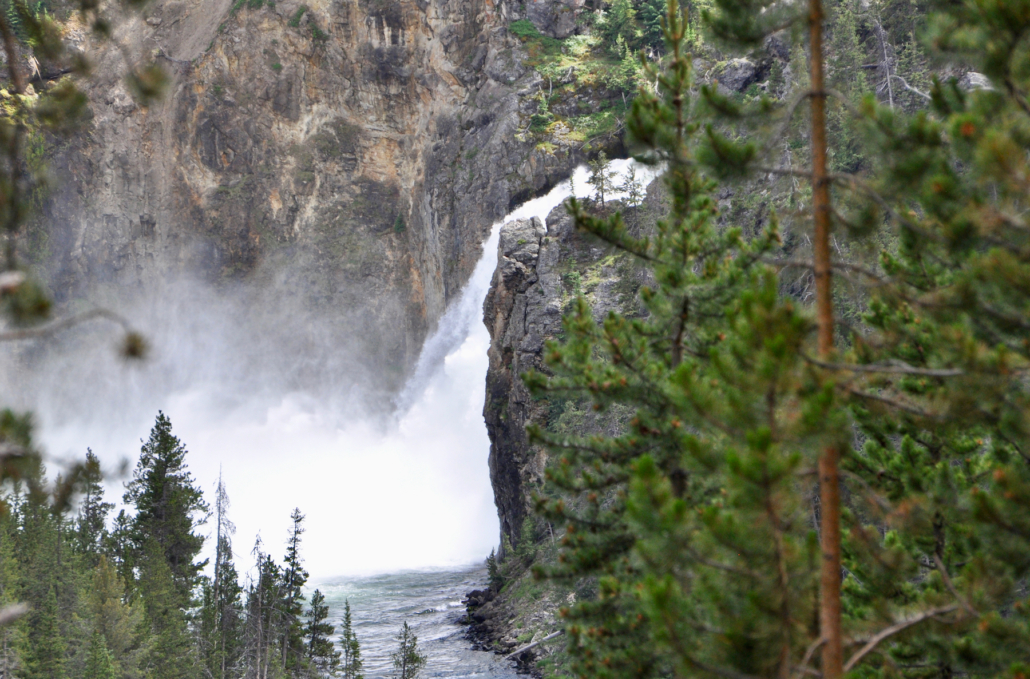
Cascading waterfalls on the mighty Yellowstone River helped carve the “Grand Canyon of Yellowstone.”
Policy and Public Land Management
Yet another theme may be policy and public land management. The National Park Service was created on August 25, 1916. Today there are more than 400 national park sites, over 560 national wildlife refuges, and nearly 250 million acres of other public lands. Maybe you are curious about what makes something a public land? Or maybe your crew is interested in knowing more about how a national park is designated or named, how wildfires are managed, why parks have nonprofit partner organizations, or who runs the concessions. What makes some national parks, like Yellowstone, a crown jewel?
Summers are especially fun to explore some of these questions, as the National Park Service celebrates its birthday on August 25. Everyone is invited to share how they feel connected to parks at #YourParkStory or #NPSbirthday. Check out the park service social channels for information about celebrations, educational events, and other ways to engage.
There are so many rich educational opportunities and worldschooling themes at Yellowstone National Park. As you start peeling back the layers and asking questions, you’ll uncover even more stories, more questions, and more shared educational adventures for your family.
Resources
Here’s a list of some additional educational resources to help ignite your curiosity and wonder and to help instill in your children a deep sense of responsibility for our beloved national parks:
- Junior Ranger – Self-guided educational journey for kids four and older. Booklet + ranger badge upon completion.
- Young Scientist – Self-guided science exploration in visitor centers and in the field. Booklet + badge upon completion.
- Yellowstone Sound Library – Collection of sounds for visitors to experience the aural landscape of the park.
- Yellowstone Video Library – An extraordinary collection of video clips second only to being out in it.
- Citizen Science – A publicly-funded program that uses crowdsourcing to engage ordinary citizens (you don’t have to be a scientist) in participatory and collaborative science. It’s a great worldschooling approach for the whole family to learn side by side.
- Yellowstone Forever – The official nonprofit partner of Yellowstone National Park Service that works to protect, preserve and enhance the park through a wide variety of programs.
- Guided Painting and Photography Trips – A list of contacts and organizations that offer hands-on painting and photography excursions in the park.
- Jobs, Internships and Volunteering in the Park – Information about paid experiences for youth and young adults.
- Ranger Program – Yellowstone’s in-park ranger programs are available from Memorial Day through September. The park also has an archive of past live Ranger talks.
Here are some additional resources to help plan your Yellowstone adventure:
- National Park Service planning Page.
- First Timers Guide to Yellowstone.
- Explore Yellowstone Like a Local Guidebook.
- Xanterra Parks and Recreation Website.
And, finally, here are three tips for dealing with crowds in Yellowstone:
- Visit in the off-season – And, if you love winter and can handle the cold, consider venturing into the park in the winter months. The grizzlies are hibernating but everyone else is awake. Mammoth Hot Springs Hotel and Cabins and Old Faithful Snow Lodge are open to guests! You can ski, snowshoe, and enjoy the bison and wolves, practically all to yourselves!
- If it works best for your situation to go in the summer, just embrace it. There’s a reason so many people go to Yellowstone. It’s AMAZING! So, share the wonder with the person to your left, to your right, in front of you, and behind you. The national parks are for all of us, forever. Accept and enjoy.
- Get off the beaten path – There are over 1000 miles of hiking trails and 293 designated backcountry campsites at Yellowstone.
